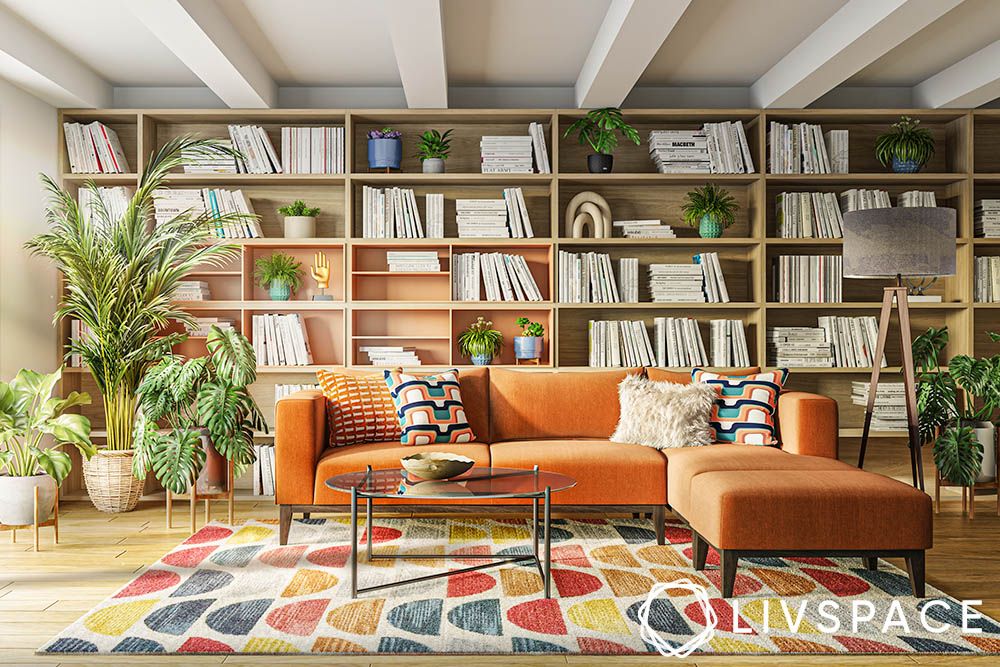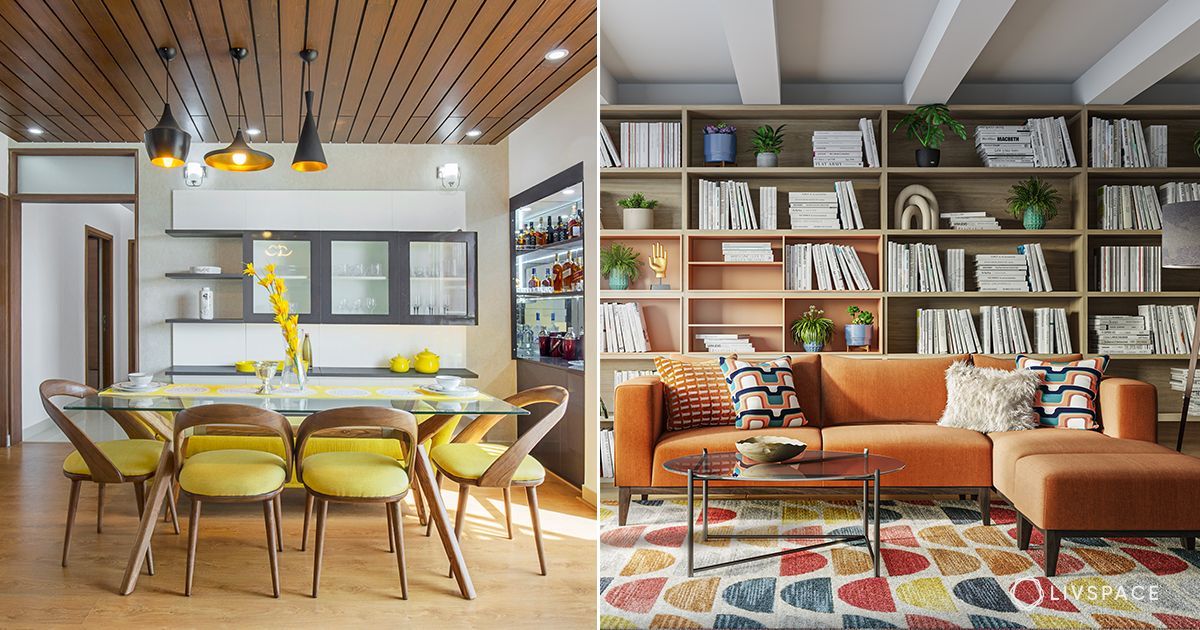Mid Century Interior Designers: Crafting Timeless Elegance In Modern Homes
Mid century interior designers have revolutionized the way we perceive interior spaces, blending functionality with sophisticated aesthetics. Their work continues to inspire homeowners and professionals alike, offering a timeless design language that resonates across generations. By understanding the principles and techniques of these iconic designers, we can create spaces that reflect both classic charm and contemporary appeal.
The mid century modern movement, which gained prominence in the mid-20th century, brought about a paradigm shift in interior design. It emphasized simplicity, clean lines, and innovative use of materials. This era's designers were pioneers in creating spaces that were not only visually stunning but also highly functional, catering to the evolving needs of modern living.
As we delve deeper into this topic, we will explore the contributions of key mid century interior designers, their signature styles, and how their work continues to influence contemporary design trends. Whether you're a design enthusiast or a homeowner looking to incorporate mid century elements into your space, this article will provide valuable insights and inspiration.
- Simone Biles Outfit Bears
- When Will Wicked Be Able To Rent
- Silvion Ramsundar
- Nude Ricki Lake
- Ayesha Curry Wedding
Table of Contents
- The History of Mid Century Modern Design
- Key Figures in Mid Century Interior Design
- Biography of Mid Century Interior Designers
- Core Design Principles of Mid Century Modern
- Iconic Works of Mid Century Designers
- Furniture Trends in Mid Century Design
- Mid Century Modern Color Palette
- Material Choices in Mid Century Design
- Contemporary Influence of Mid Century Design
- Tips for Incorporating Mid Century Design
The History of Mid Century Modern Design
The mid century modern movement emerged during the mid-20th century, roughly between the 1940s and 1960s. This period was marked by significant advancements in technology, architecture, and design, which influenced the way people lived and interacted with their environments. Mid century interior designers played a pivotal role in shaping this movement, focusing on creating spaces that were both aesthetically pleasing and highly functional.
One of the defining characteristics of mid century modern design is its emphasis on simplicity and minimalism. Designers during this era embraced clean lines, organic shapes, and innovative use of materials such as wood, metal, and plastic. This approach not only reflected the post-war optimism but also catered to the growing demand for affordable yet stylish living spaces.
The movement gained widespread popularity due to its ability to blend seamlessly with various lifestyles and tastes. Today, mid century modern design continues to inspire designers and homeowners, offering a timeless aesthetic that resonates across generations.
- Mens Clinical Strength Deodorant
- The Missing Half A Novel
- Ugly Dog Names
- Anne Hathaway Jeans
- Corey Carter Richardson
Key Figures in Mid Century Interior Design
Several mid century interior designers emerged as key figures during this era, each contributing unique perspectives and innovations to the field. Their work laid the foundation for modern interior design and continues to influence contemporary trends.
Biography of Mid Century Interior Designers
Below is a brief overview of some of the most influential mid century interior designers:
| Name | Birth Year | Death Year | Notable Works |
|---|---|---|---|
| Charles and Ray Eames | 1907 (Charles), 1912 (Ray) | 1978 (Charles), 1988 (Ray) | Eames Lounge Chair, Eames House |
| Eero Saarinen | 1910 | 1961 | Tulip Chair, Gateway Arch |
| George Nelson | 1908 | 1986 | Nelson Bench, Coconut Chair |
Core Design Principles of Mid Century Modern
Mid century modern design is built on a set of core principles that guide its aesthetic and functionality. These principles include:
- Simplicity: Emphasis on clean lines and minimal ornamentation.
- Functionality: Design that prioritizes usability and practicality.
- Organic Forms: Use of natural shapes and curves inspired by nature.
- Innovative Materials: Exploration of new materials such as plastic, fiberglass, and plywood.
These principles have stood the test of time, making mid century modern design a timeless choice for homeowners and designers alike.
Iconic Works of Mid Century Designers
Mid century interior designers are renowned for their iconic works that have become synonymous with the movement. Some of the most notable pieces include:
Charles and Ray Eames: Eames Lounge Chair
The Eames Lounge Chair, designed by Charles and Ray Eames in 1956, is one of the most celebrated pieces of mid century furniture. Its sleek design and luxurious comfort have made it a staple in modern homes.
Eero Saarinen: Tulip Chair
Eero Saarinen's Tulip Chair, introduced in 1956, revolutionized seating design with its sculptural form and innovative use of materials. The chair's seamless base and smooth curves epitomize the mid century modern aesthetic.
Furniture Trends in Mid Century Design
Mid century furniture trends are characterized by their unique blend of functionality and style. Key trends include:
- Low Profiles: Furniture with low silhouettes that create a sense of openness and spaciousness.
- Multi-functional Pieces: Furniture designed to serve multiple purposes, enhancing practicality.
- Natural Materials: Use of wood, leather, and other natural materials to add warmth and texture.
These trends continue to inspire contemporary furniture designers, offering a bridge between classic and modern aesthetics.
Mid Century Modern Color Palette
The mid century modern color palette is known for its vibrant yet harmonious hues. Common colors include:
- Earth Tones: Warm browns, greens, and yellows inspired by nature.
- Bold Accents: Bright colors such as mustard, teal, and coral used to add visual interest.
- Neutral Backdrops: Soft whites, grays, and beiges providing a calming foundation.
This palette creates a balanced and inviting atmosphere, making it ideal for both residential and commercial spaces.
Material Choices in Mid Century Design
Mid century interior designers were pioneers in experimenting with new materials, resulting in innovative and groundbreaking designs. Common materials include:
- Wood: Used for its natural beauty and durability, often in teak, walnut, and oak.
- Metal: Incorporated for its sleek and modern appeal, typically in aluminum and steel.
- Plastic: Explored for its versatility and affordability, often in molded forms.
These materials not only enhanced the aesthetic appeal of mid century designs but also contributed to their functionality and longevity.
Contemporary Influence of Mid Century Design
The influence of mid century modern design extends far beyond its original era, continuing to shape contemporary trends. Today, designers and homeowners alike are drawn to its timeless elegance and practicality. Key factors contributing to its enduring appeal include:
- Adaptability: Mid century design seamlessly integrates with various styles, from traditional to minimalist.
- Sustainability: Emphasis on natural materials and craftsmanship aligns with modern eco-conscious values.
- Timeless Aesthetic: Its clean lines and organic forms remain relevant in today's fast-paced world.
As the demand for sustainable and functional design grows, mid century modern continues to inspire new generations of designers.
Tips for Incorporating Mid Century Design
If you're looking to incorporate mid century design into your home, consider the following tips:
- Start with Furniture: Invest in iconic pieces such as the Eames Lounge Chair or Tulip Chair to anchor your space.
- Experiment with Colors: Use bold accent colors to add personality and visual interest.
- Blend with Modern Elements: Combine mid century pieces with contemporary designs for a unique and cohesive look.
By following these tips, you can create a space that reflects the timeless elegance of mid century modern design while catering to your personal style.
Conclusion
Mid century interior designers have left an indelible mark on the world of design, shaping the way we perceive and interact with our living spaces. Their emphasis on simplicity, functionality, and innovation continues to inspire contemporary trends, offering a timeless aesthetic that resonates across generations.
As you embark on your own design journey, consider incorporating elements of mid century modern design to create a space that is both stylish and functional. We invite you to share your thoughts and experiences in the comments below, and explore our other articles for more design inspiration. Together, let's celebrate the enduring legacy of mid century interior designers and their contribution to the world of design.
- Hugh Grant Colin Firth Friends
- Nessa Diab Baby Name
- Stephen Love Is Blind African
- Tereza Ka%C3%84 Erov%C3%83 Avicii
- Sheryl Lee Ralph Weight Loss

About Us

Interior Design For Mid Century Modern Homes

Interior Design For Mid Century Modern Homes